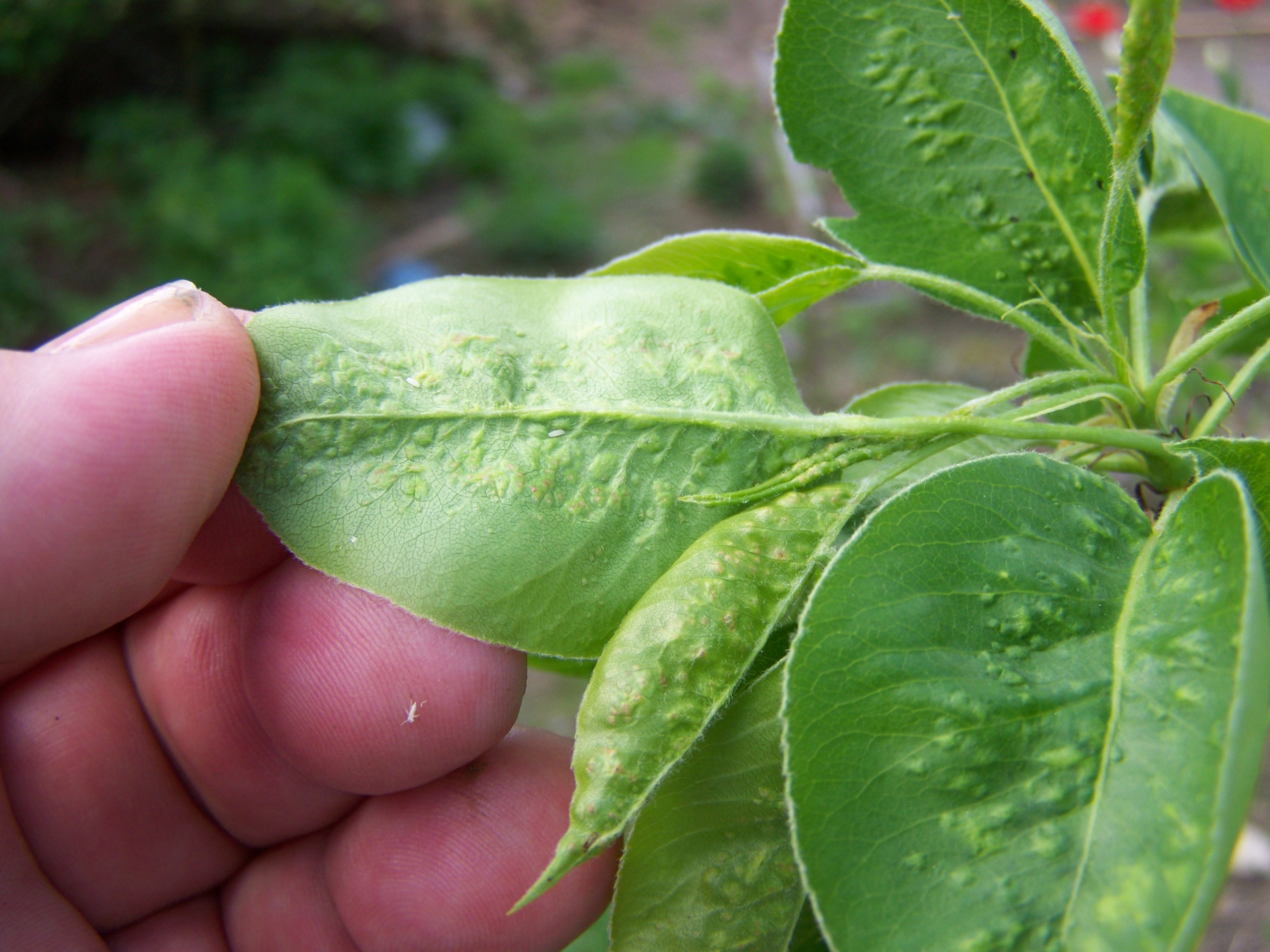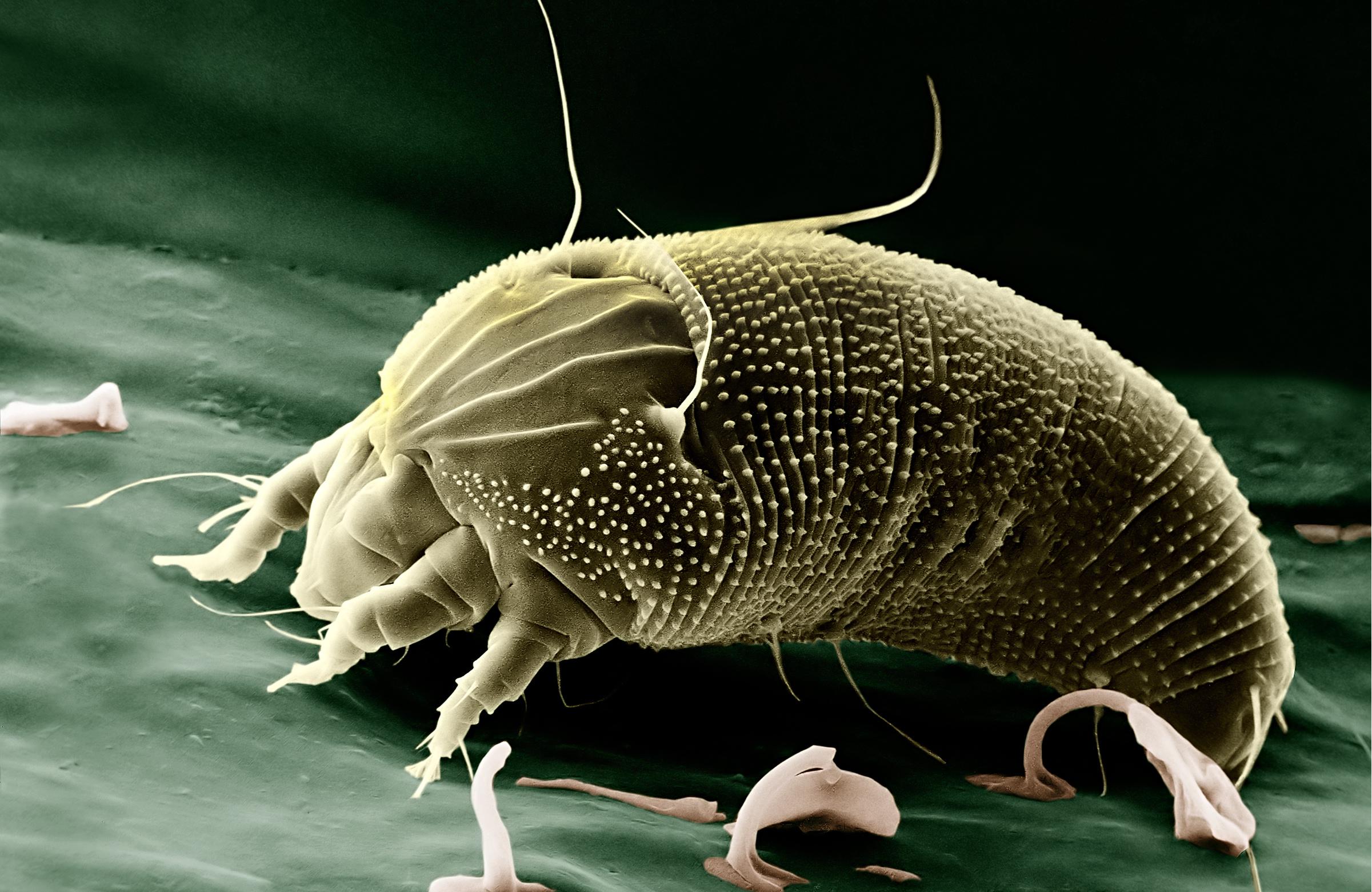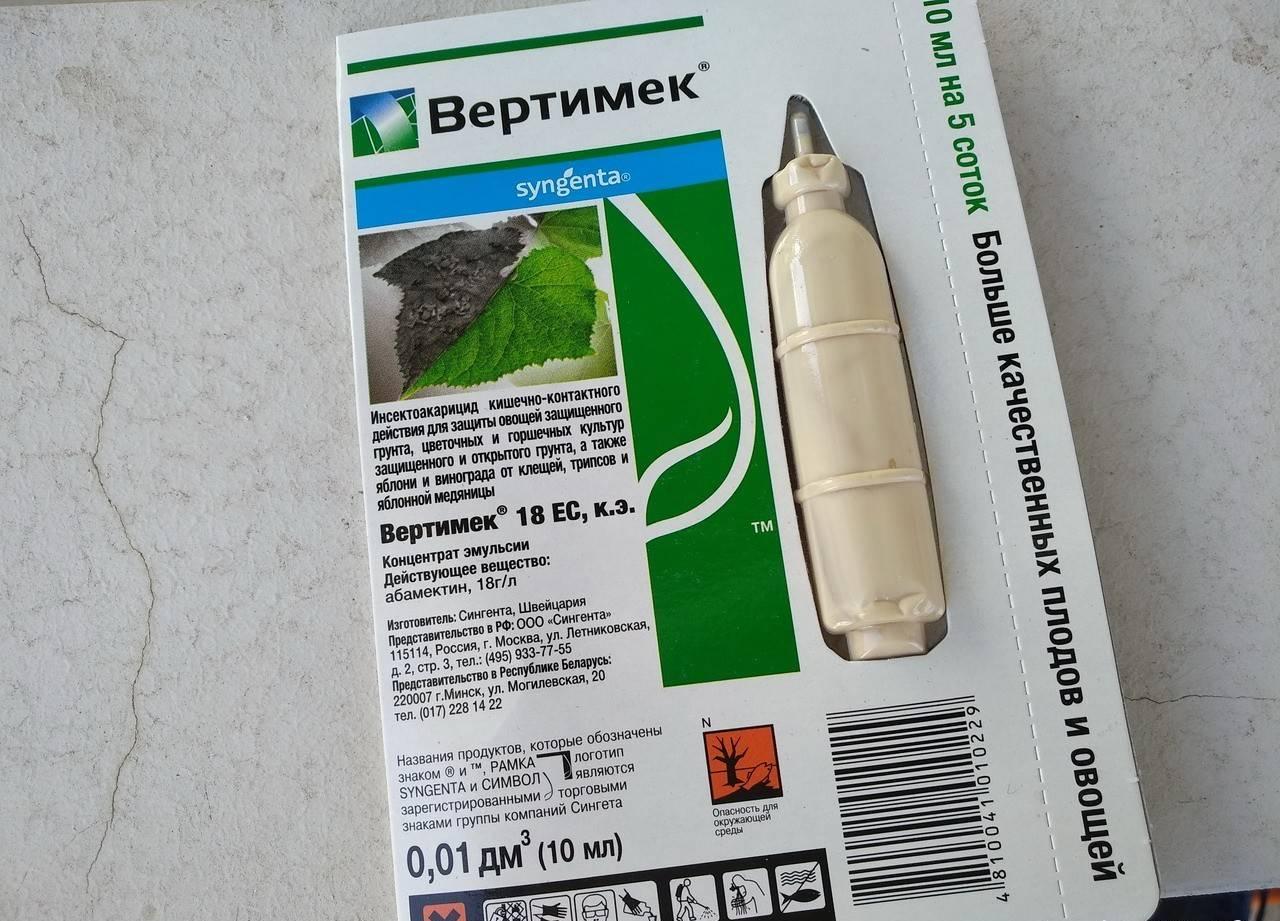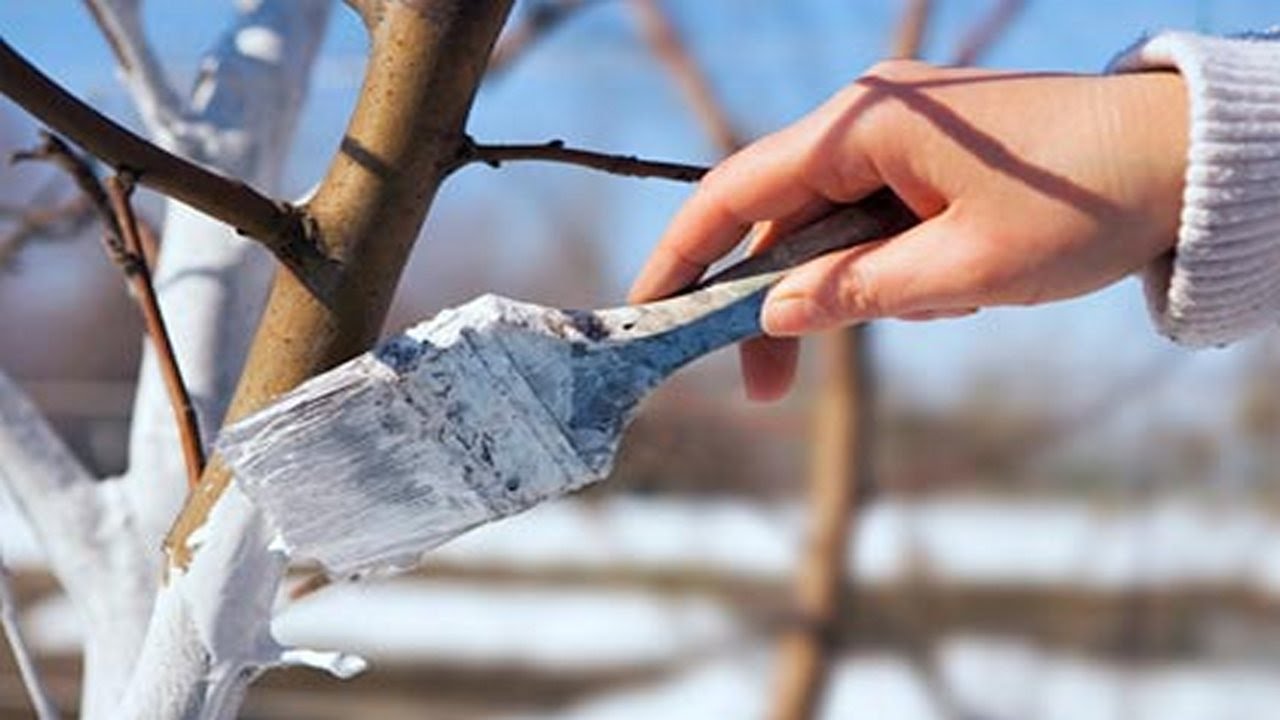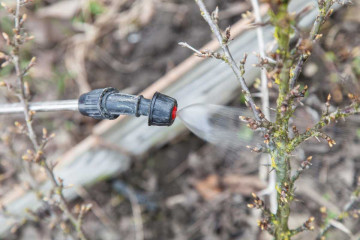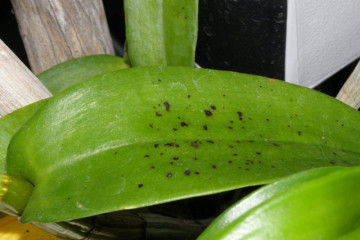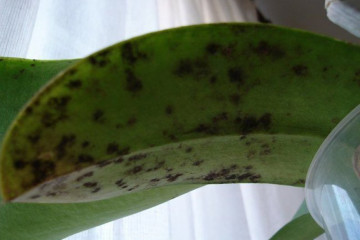Gall mite on a pear on the leaves: how to treat
Content:
Probably every gardener has heard of such a pest as a gall mite. It affects various horticultural crops, including pear. Of course, it is very important to know how to deal with it in order to start treatment in a timely manner and protect fruit plants from a dangerous insect.
How to recognize a pest
Alas, it is almost impossible to notice this pest - its size is about 0.2 millimeters. But it is easy to see traces of his activity - swellings appear on the leaves, similar to burns on human skin.
Over time, there are so many of them that they cover the entire surface, which is why the latter wither and fall off. By this time, the ticks have time to move to other leaves.
Description of the pest
As mentioned above, adults are just tiny, so it's quite difficult to see them. Their color is white, but when autumn approaches, it changes to light brown or pink. Two pairs of legs allow you to move quite quickly (for its size) in search of food.
They reproduce quite actively - the female lays 5-6 eggs, which hatch and begin to quickly suck the juice from the leaves, disrupting the water balance.
Reasons for the appearance
It is very important to know why a tick appears on pear leaves. This usually happens if no treatment has been carried out for several years in the spring. The crown becomes too thick and the sun's rays cannot illuminate all the leaves.
In addition, the reason may lie in the fact that the gardener does not remove leaves and rotten fruits from the ground.
Finally, with an excess of phosphorus fertilizer applied in autumn, the risk of gall mite infestation also increases.
What is the danger to a fruit tree
In general, the pear mite multiplies quickly and can, infecting branch after branch, cover the entire tree. By sucking the sap from the leaves, it causes the leaves to shed. The pear is simply sick from this, the normal process of photosynthesis is disrupted. And the fruits either do not appear at all, or are tied in small quantities, small and dry.
Therefore, it is important to know how to treat a tree from a pest and take action immediately after it is detected.
Pear Gall Mite Control Measures: From Chemicals to Biologics
Today, there are quite a few ways to deal with a tick. It is advisable to apply them in a complex manner to achieve the best result.
Biological pesticides
An effective way to combat is the use of the insecticidal acaricidal preparation "Vertimek". This reliable biological pesticide is made from fungal waste and is safe for humans. At the same time, it has both a contact and intestinal effect on the tick, destroying both adults and larvae. The main thing is to spray the tree immediately after detecting a threat.
Agrotechnical methods
Another reliable method is the timely whitewashing of both the trunk and large branches.This slows down the spread of the pest and also reduces its number.
Do not forget about nitrogen fertilization - thanks to them, the plant becomes stronger, the leaves resist the pest longer, which gives the gardener additional time to process the trees.
Chemical methods
Today there are quite a few chemicals that can kill the gall mite. They are made on the basis of chlorine or organophosphorus compounds. First of all, these include "Nitrafen", "Fufanon", "Akreks" and "Karbofos".
Processing should be carried out every two weeks, but not at a time when the fruits have already formed and ripen.
Vertimek against gall mite
Often, experienced gardeners use "Vertimek" for treatment - a non-systemic insecticide, which, a few hours after treatment, penetrates the structure of the leaves, making them a real poison for the tick. Therefore, it is not necessary to process the branches both from the top and from the bottom - this saves the preparation and time.
At the same time, the plant itself, as well as people consuming the crop, the drug does not cause the slightest harm.
Suitable for processing not only pears, but also cucumbers, mountain ash and other cultivated plants.
Fitoverm
It has both contact and intestinal effects on pests. That is, it poisons both when eating the treated leaves, and with a simple hit on the outer integument. After a few hours, from 96 to 100% of the insects die from paralysis.
An important advantage is environmental safety - in soil and water, it quickly collapses without causing the slightest harm.
Provides reliable protection - outdoors for 10-15 days (if there was no rain), and indoors - up to three weeks.
Folk remedies to combat pear gall mite
However, not all gardeners enjoy using store-bought chemicals. Some people prefer traditional methods. Fortunately, they are quite effective and simple.
To prepare the infusion, you need a kilogram of potato tops. It is crushed and poured with 10 liters of warm water, after which it should be infused for 4 hours. The resulting mixture is filtered through cheesecloth. Then liquid soap is added to the liquid - about a tablespoon, to make it more thick. Can be used immediately by treating all affected trees.
Prevention measures
Of course, if a gall mite appeared on a pear in the garden, you need to know how to treat infected plants. But it is even better to have an idea of the measures that need to be taken in order not to face such a problem.
First of all, it is important to thin out the crown and process the trunk with lime. In addition, every autumn old leaves and weeds must be removed from under the tree - they can be sent to the compost heap, but it is better to burn them, receiving potassium-phosphorus fertilizer. Due to this, the number of larvae will be sharply reduced.
In addition, it is advisable to process fruit trees with copper sulfate twice a year - in autumn and spring.
Finally, the dosage of the top dressing must be strictly observed. Do not forget that with an excess of phosphorus, the risk of tick breeding increases significantly. Therefore, it is better to use too little fertilizer than too much.
This concludes the article. Now the reader knows how to deal with a dangerous pest and can easily take timely measures immediately after it is found in his garden.
